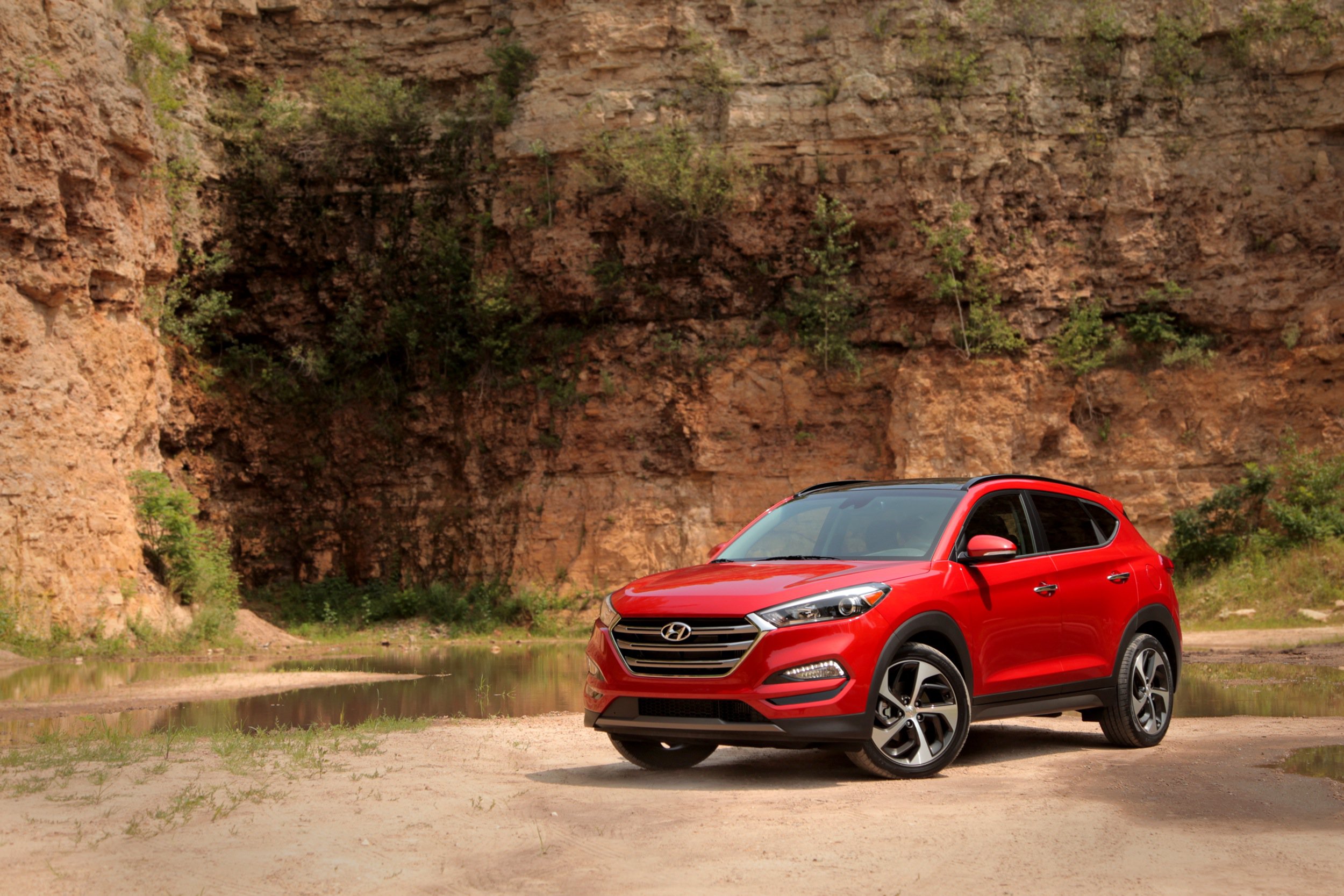In recent years Hyundai has been shrugging off its no-frills image in an attempt to take on the likes of Ford, Nissan, and Volkswagen, and the Tucson is the latest step in that process.
A replacement for the ix35, it is a mid-size SUV with room for five people, a choice of petrol or diesel engines and the option of four-wheel drive. As such, the Tucson can count the Nissan Qashqai, Kia Sportage and Ford Kuga among its many rivals.
Here’s a list of pros and cons
Space in the Hyundai Tucson
The Tucson is longer and wider than the ix35 which it replaces, a combination that results in a significantly more spacious interior. There’s room for five adults, with those in the outer two seats enjoy plenty of leg and headroom, even when the optional panoramic sunroof is fitted. And while the rear seats don’t slide, you can adjust the angle of the backrests.
The boot is similarly impressive, beating that of a Nissan Qashqai for space, if not having as many plastic divider panels to stop smaller items from sliding around. As you’d expect, the rear seats can drop to form a completely flat load area.
All doors have useful storage bins, plus in the front, there are numerous trays and cupholders, plus a large glovebox and a lidded compartment under the armrest.
Comfort in the Hyundai Tucson
The Tucson features ample adjustment in the steering wheel and seat, so it’s easy to find a comfortable driving position, enjoying that commanding view over traffic that SUV drivers love. The seats themselves are supportive, and the Tucson impresses for how it shuts out noise tyre and wind noise.
The suspension is well judged, with enough give to take the sting out of bumps and ridges in the road.
The turbocharged 1.6 petrol engine is quiet at low speeds but more intrusive on the motorway, where the 2.0-litre diesel makes for a more relaxed companion.
Dashboard Styling of the Hyundai Tucson
Hyundai’s interiors have been steadily improving in recent years, and while the Tucson still features a couple of small errors (notably the cheap silver plastics and the fact that the heater controls are mounted slightly too low), the overall impression is very good.
The dials are easy to read, the stalks much simpler to use than in the ix35, and the 8-inch touchscreen system on SE Nav models and above is very responsive, with clear graphics and logical menus.
Driving Ease of the Hyundai Tucson
While the Tucson’s controls aren’t overly light, they are consistently weighted, which makes it easy to guide. The wide windscreen helps to eliminate potential blind spots, although over-the-shoulder visibility is still restricted.
On such a big car, rear parking sensors are well worthwhile, so it pays to upgrade to at least SE specification. SE Nav models and above also feature a reversing camera.
Aside from the non-turbo 1.6-litre petrol engine, all Tucson’s have sufficient power for overtaking, but if you want four-wheel drive or an automatic gearbox, you’re limited to the 1.6-litre turbo petrol and 2.0-litre diesel engines.
The Tucson puts in a respectable performance for such a big car, with lots of grips (particularly in all-wheel-drive versions) and sufficient resistance to body lean. However, while direct, the steering is also lifeless, with no feel at all for what the front wheels are doing, and none of the engines possesses the kind of power that’s likely to put a grin on your face.
Reliability of the Hyundai Tucson
Tucson comes with a five-year, unlimited mileage warranty, which is better than most of its rivals; the Kia Sportage goes one – nay, two – better, with a warranty that lasts seven years, but it’s limited to 100,000 miles, and Hyundai also throws in breakdown cover.
The most popular version of the Tucson is also likely to be the most popular, that being the 1.7-litre diesel, which returned 61.7mpg in official fuel tests. However, that’s still no match for the Nissan Qashqai, which returned almost 75mpg in the same test.
The 2.0-litre diesel returned between 44-59mpg, with those models fitted with four-wheel drive and an automatic gearbox noticeably thirstier, in part because they don’t get a stop and start system like other Tucsons.
Those few who opt for a petrol engine can expect the economy in the region of 35mpg.
Safety in the Hyundai Tucson
As one of the more expensive Hyundais on sale, it features lots of active safety equipment, albeit as optional extras. This includes an automatic emergency braking system that can detect a fast-approaching object in front and, if the driver fails to react, slow and even stop the car by itself. At speeds up to 44mph, the system can even detect pedestrians.
Other features include lane keeping assist, blind spot detectors and a stability system to help you regain control if the car loses grip, and all models feature six airbags.

